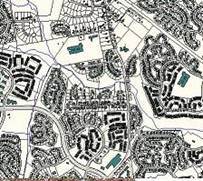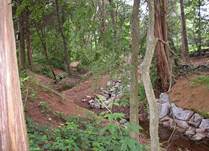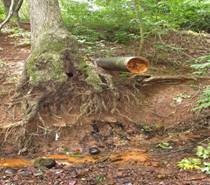

Overseeing the Water Resources of Loudoun County, VA
Impervious Surfaces
In the late 90's a study by George Washington University's Environmental Indicators program showed that over 18 acres of Loudoun County's natural landscape were being converted to buildings, roads, and manicured lawns each day. These rooftops, driveways, roads, and parking lots are a major cause of the change in many of Loudoun's' streams.

Development along Beaverdam Run

Erosion in Cardinal Glen drainage
Pollutants -- Stormwater runoff from urban/suburban areas, industrial parks, and roadways also contain a variety of pollutants including oil, grease, heavy metal, and pesticides. Without forested floodplains and vegetative buffer zones along streams, these pollutants are not absorbed into the ground and converted by bacteria. Instead they flow directly into the waterways where they are toxic to aquatic organisms and other organisms in the stream food chain.

Drainage pipe to Sugarland Run
info@loudounwatershedwatch.org Copyright © 2011 Loudoun Watershed Watch